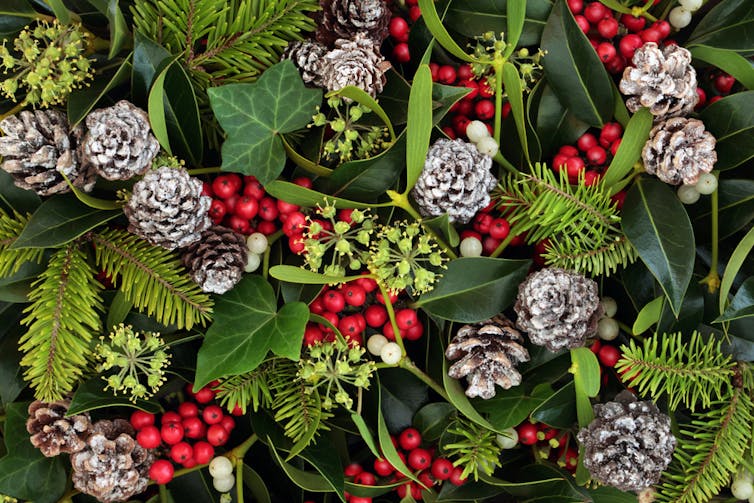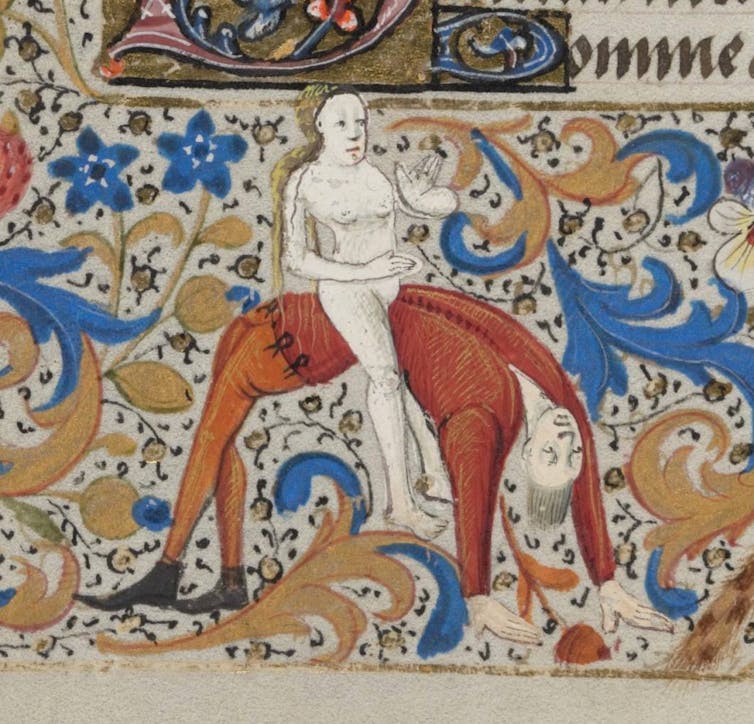31.12.19
The Silvery Tay
"Thy scenery around is charming I'll be bound...
And would make the heart of any one feel light and gay on a fine summer day,
To view the beautiful scenery along the banks of the silvery Tay."
30.12.19
29.12.19
Artist and author Alasdair Gray dies aged 85
Artist and author Alasdair Gray has died aged 85 after a short illness. The polymath, renowned for his masterpiece Lanark, died on Sunday at Queen ...
* The full article is published here...
* The full article is published here...
27.12.19
If... ...McGonagall made music - The album
https://soundcloud.com/user-112030456/sets/if-mcgonagall-made-music
Multimedia artist Paul Garrard has just released his first album of music
Upon its release Paul said, “I love music. I've been in love with it all my life, although I never ever thought I would end up making/composing it. But that's now where I've ended up and it's very satisfying. It’s another dimension in which to express myself.
First and foremost I'm an artist and I approach composing in a similar way to my art. Well, actually music is just another artistic strand. Music composing for me is a process very much like collage.”
The album consists of ten tracks and has been released on SoundCloud track by track over the last few months with the final track ‘Silvery Tay’ released today. It will be available to purchase as a download on 1st January 2020 on a pay what you feel able to basis.
He went on to say, “My music doesn’t fit into any one particular genre. Loosely speaking it’s a mix of ambient and up tempo avant garde, but it contains quite a lot of emotions and influences, so that categorising it is difficult. Which is how I like it.”
26.12.19
23.12.19
Mass resignations at troubled Perth arts operator
The ongoing saga at crisis-hit Horsecross Arts has taken another dramatic turn with the majority of its board members resigning last week in the wake ...
* The full article is published here...
* The full article is published here...
20.12.19
Decking the halls of history: the origins of Christmas decorations

Shutterstock/marilyn barbone
The idea of hanging up decorations in the middle of winter is older than Christmas itself. Decorations are mentioned in ancient descriptions of the Roman feast of Saturnalia, which is thought to have originated in the 5th century BC.
Some 900 years later, a Christian bishop in Turkey wrote disapprovingly about members of his congregation who were drinking, feasting, dancing and “crowning their doors” with decorations in a pagan fashion at this time of year.
The 6th-century Pope Gregory the Great took a different line. The Venerable Bede, an English monk, records that English pagans had celebrated the start of their year at the winter solstice and called it “the night of the mothers”.
Gregory recommended that these celebrations should be reinvented rather than banned. So the construction of green boughs and natural adornments was instead focused on churches – using plants that have retained their festive significance to this day.
Nature, of course, has a role to play. In countries like the UK, midwinter greenery is limited. The leaves that are available – holly, ivy and mistletoe – became obvious choices for decorations. Mistletoe had long been revered by druids, while holly and ivy were celebrated in English songs at least from the 15th century.
King Henry VIII composed one which begins: “Green groweth the holly, So doth the ivy, Though winter blasts blow never so high, Green groweth the holly.” (I have modernised the spelling, but it was never very catchy.)
Greenery was cheap and perhaps for that reason is not mentioned in descriptions of domestic decorations from medieval Europe. Aristocratic households preferred to display their wealth by bringing out their best tapestries, jewels and gold platters.
Wax candles were another form of conspicuous consumption, as well as a nod to religious significance. But descriptions of Christmas festivities well into the 17th century focus on the decoration of the person rather than the house. Strange costumes, masks, role-reversing clothes and face-painting are all repeatedly mentioned.

Old and new.
Shutterstock/Dan74
Early emphasis on domestic decorations does appear in a Christmas song by the English poet and farmer Thomas Tusser, written in 1558. It opens: “Get ivy and hull [holly] woman, deck up thine house.” Clearly, the decoration of family homes was considered to be work for women – and this too has become a persistent tradition.
In the following century, Christmas celebrations became a matter of heated argument between reformers and traditionalists, with the reformers attacking what they saw as pagan revelries.
Creating modern traditions
It was the Industrial Revolution which came much closer to destroying Christmas than the puritans managed, by taking away traditional holidays in the late 18th and early 19th centuries. Social reformers responded by energetically reinventing traditions.
The emphasis remained heavily on female responsibility for decorations, however. The British magazine, The Lady, asserted in 1896 that any hostess whose decorations were “meagre” was a disgrace to her family.
What then would be expected by this date? A middle-class woman might have been guided by the song which opens with the celebrated instruction to “Deck the hall[s] with boughs of holly”, published in 1862.
This song is itself a good example of the ongoing recreating of traditions throughout history. The new English lyrics were written to accompany a 16th-century Welsh melody, whose original words made no mention of holly or decorating. The 1862 lyrics were almost immediately updated to remove encouragement of heavy drinking.
Still relatively new in Britain and the US at this time, though rising in popularity, was the German custom of the decorated Christmas tree, which was first recorded in the Rhineland in the 16th century.
Its decorations were mainly candles and small presents, which were often homemade food and sweets. By 1896 the tree might be accompanied by a display of printed Christmas cards bearing images of holly, mistletoe, seasonal food and bells. Newer images included robins and, of course, Father Christmas. Another innovation was the arrival of electric lighting in the 1890s, which made possible the invention of fairy lights.

Lighting up midwinter.
Shutterstock/kryzhov
Arguably, the Industrial Revolution, having failed to destroy Christmas, eventually absorbed and expanded it. Affordable, mass-produced toys, gifts and decorations turned Christmas into the festival we know today and made decorations possible for almost all households, even in big cities where foliage was scarce.
One man who played a major part in creating and spreading affordable versions of decorations was the American entrepreneur and retail mogul, F W Woolworth. His decision to import large quantities of glass baubles and stars, originally produced by family workshops in Germany, did much to spread this new medium.
Alongside these came paper garlands and decorative Christmas stockings, as well as painted tin toys. Another idea which started in Germany was tinsel. This was originally fine, sparkling strips of silver, but was later mass produced – first in cheaper metals, and then plastic.
Today, of course, plastic is widely out of favour. As a result, perhaps we will see further reinvention of our Christmas decorations and traditions – which, from a historical perspective, is a tradition in itself.
Anne Lawrence-Mathers, Professor in Medieval History, University of Reading
This article is republished from The Conversation under a Creative Commons license. Read the original article.
Here come the 'angels of anarchy': Surrealist women to steal the shows in 2020
Exhibitions in UK, Europe and US speak to growing public appetite for ... Angels of Anarchy: Women Artists and Surrealism at Manchester Art Gallery in 2009, ... There is good news for museums wishing to cement the place of female ...
* The full article is published here...
* The full article is published here...
17.12.19
Disability arts pioneer inspires students
Tony, who is chair of Shape Arts and consultant to leading cultural organisations including the British Council, Tate and the Research Centre for ...
* The full article is published here...
* The full article is published here...
16.12.19
Yuletide lights
Highlighting the Christmas lights and in particular the tunnel of lights in Norwich city centre.
14.12.19
Woman with dementia wins national card competition
News · Jobs · Sport · What's On · Competitions · Announcements · Pictures ... The project runs two successful art groups, one of which Gail has been ... Christmas Pie Avenue and Spanker Lane: 35 of the UK's silliest street names. 2.
* The full article is published here...
* The full article is published here...
12.12.19
Medieval poet who wrote about domestic abuse, female sexuality – and in praise of vaginas

The poetry of Gwerful Mechain praised the female body
Book of Hours France 15th century , CC BY-SA
Rhea Seren Phillips, Swansea University
You may recognise the name of the medieval Welsh bard, Dafydd ap Gwilym, and that of his famous poem, Cywydd y Gal or Ode to the Penis. What you may not know is that medieval poet, Gwerful Mechain, wrote a response to his poem nearly a century later. Cywydd y Cerdor is an ode to the vagina, praising it and condemning the men who ignore it in favour of a woman’s more acceptable features: “Lovely bush you are blessed by God above”. It is one of her most well-known verses and encapsulates the themes and values that her poetry embodies.
Gwerful Mechain (c.1460-c.1502) wrote about female sexuality and domestic issues during a time when women’s rights were non-existent. Her poetry has been brought to a modern English-speaking readership through translations by academics. Most notably by Katie Gramich in her 2018 anthology of The Works of Gwerful Mechain.
You might think that Mechain’s work would be isolated from her male contemporaries, and that she would have been shunned as a social outcast. However, her poetic exchanges with popular contemporary bards such as Dafydd Llwyd and Llywelyn ap Gutyn suggest that Mechain enjoyed popularity and her poetry was well-regarded by her male contemporaries.
The medieval feminist
She was a poet with a strong sense of justice and morality. For many poets of the time, such sentiments were confined to religious devotion. For Mechain, however, they were not. Instead, she drew on religious learning to represent the lowly serving class by writing poetry about domestic and corporeal acts in a sacred and almost ritualistic way.
To her maid as she shits
She squats and lets out her water‒cascading
From the cauldron of her pants as she totters;
Her twin holes make a great bubbling clamour
Then comes the dung and a rainbow arch of water.
Her use of language here would have been expected in religious poetry celebrating Christ, not in a poem about an act that medieval society would have considered unworthy of refined praise.
The righteous sense of justice revealed in her poetry extends beyond the serving class. To Her Husband for Beating Her is a scathing and surprising remark on domestic abuse in medieval households.
To her husband for beating her
A dagger through your heart’s stone‒on a slant
To reach your breastbone;
May your knees break, your hands shrivel
And your sword plunge in your guts to make you snivel.
This theme is continued in her response to Ieuan Dyfi’s poem, Red Annie, a cywydd (Welsh poetic measure) that laments how false women have been throughout the ages. Mechain uses robust and playful language to express how women are often the victims of male oppression and how it is women who are more honourable and virtuous than men.
Tiborea, the mother of Judas the traitor,
She was a loving wife, don’t hate her,
No one was safe from her pointed words. To Jealous Wives, a satirical poem, is a favourite.
But these damn wives, so respectable
Won’t give up their cocks delectable
In this poem, she berates married women for keeping their men to themselves. Her choice of language reduces men to their genitalia. She presents it as a separate identity that has an important position within the household, and in married women’s hearts. This poem is an example of her humorous and satirical writing style.

Female sexual pleasure was a source of power and also entertainment.
Bible moralisée, France 15th century, CC BY-SA
A nobel poet
Her collection of satirical, religious, righteous and humorous verse gives Mechain’s unashamedly feminist poetry a timeless quality. To understand why Mechain was allowed to have such a strong and overtly female voice in a patriarchal society, it is important to consider her social standing. She was the daughter of Hywel Fychan (later anglicised to Vaughan) from Mechain, Powys. Her father was part of the noble Vaughan family of Llwydiarth. Her nobility might have given her the confidence to speak with authority.
Her poetry has interested academics and modern readers not just because she is a medieval female bard ‒– the only known one to have a substantial surviving body of work –‒ but because of how equally she was received and how the content of her work was not dissimilar to that of her male contemporaries.
It seems to me that she was never a curiosity of her age, although she had all the qualities of one, and that she was regarded as an equal by her male counterparts. As Katie Gramich states in her introduction to The Works of Mechain, she is “confident in her own craft and opinions”. And, in that, her work remains as powerful today as it did in the 15th century.
Rhea Seren Phillips, PhD candidate, Swansea University
This article is republished from The Conversation under a Creative Commons license. Read the original article.
11.12.19
Prize challenge to artists and scientists
It will be awarded to an innovative, ambitious, early-career artist who is motivated by the opportunity to ... For more information visit dareyou.org.uk.
* The full article is published here...
* The full article is published here...
8.12.19
Camille Claudel: Who was the French sculptor who broke moulds for women in art?
The life and work of Camille Claudel, the French sculptor who defied gender-based restrictions to pursue her art, is being celebrated with a Google ...
* The full article is published here...
* The full article is published here...
5.12.19
Glasgow School of Art defends 'hurtful, outdated and offensive' lecture
Glasgow School of Art (GSA) has defended a lecture containing allegedly racist and transphobic remarks, saying it reflects its commitment to ...
* The full article is published here...
* The full article is published here...
4.12.19
How can we actually create happy societies?

Bruce Mars/Unsplash, FAL
Imagine two different societies. In the first, people tend to be stressed, tense, irritable, distracted and self-absorbed. In the second, people tend to be at ease, untroubled, quick to laugh, expansive and self-assured.
The difference between these two imagined scenarios is vast. You’re not only more likely to be happier in the second scenario – you’re also more likely to be safer, healthier and have better relationships. The difference between a happy and an unhappy society is not trivial. We know that happiness matters beyond our desire to feel good.
So how can we create a happy society? The Buddhist nation of Bhutan was the first society to determine policy based on the happiness of its citizens, with the king of Bhutan famously claiming in 1972 that Gross National Happiness (GNH) was a more important measure of progress than Gross National Product (GNP).

Teenage monks in Bhutan.
Adli Wahid/Unsplash
Many other countries have since followed suit – looking to move “beyond GDP” as a measure of national progress. For instance, the UK developed a national well-being programme in 2010 and has since measured the nation’s well-being across ten domains, not too dissimilar to Bhutan’s approach. More recently, New Zealand introduced its first “well-being budget”, with a focus on improving the well-being of the country’s most vulnerable people.
Such initiatives tend to broadly agree over the conditions required for a happy society. According to the World Happiness Report, there are six key ingredients for national happiness: income, healthy life expectancy, social support, freedom, trust and generosity. Scandinavian countries – which typically top the global happiness rankings (Finland is currently first) – tend to do well on all these measures. In contrast, war-torn nations such as South Sudan, Central African Republic and Afghanistan tend to do badly. So does happiness rely on these six key ingredients?
The what, not the how
I don’t think so. This approach is, ultimately, too simple – even potentially harmful. The problem is that it focuses on what happiness is, not how to achieve it. Clearly, things such as a good life expectancy, social support and trust are good for us. But how we come to that conclusion may matter more than the conclusion itself.
For instance, how do we know that we are measuring what is most important? The world happiness rankings largely rely on measures of life satisfaction. But it is far from obvious that such measures can account for important differences in emotional well-being.

Self-reported life satisfaction, 2018.
Our World in Data, CC BY-SA
Alternatively, perhaps we could ask people what they think matters. The development of the UK’s national well-being programme took this approach, undertaking qualitative research to develop their ten domains of happiness. But this approach is also problematic. How do we know which of the ten domains are most important? The most important ingredients for one community may not be the same for another. Asking people is a good idea. But we can’t just do it once and then assume the job is done.
Don’t get me wrong – I believe these kinds of initiatives are an improvement on more narrow ways of measuring national progress, such as an exclusive focus on income and GDP. But that doesn’t mean we should ignore their faults.
There are parallels here with the pursuit of happiness on an individual level. We typically go about our lives with a list of things in our head which we think will make us happy – if only we get that promotion, have a loving relationship, and so on. Achieving these things can certainly improve our lives – and may even make us happier.
But we are fooling ourselves if we think they will make us happy in a lasting sense. Life is too complicated for that. We are vulnerable, insecure creatures and will inevitably experience disappointment, loss and suffering. By exclusively focusing on the things we think will make us happy, we blind ourselves to the other things in life that matter.
Happiness 101
Psychologists are beginning to focus their attention not just on the ingredients of individual happiness, but also on the capacities people need to be happy within inevitably insecure and fragile circumstances.
For instance, the so-called “second wave” of positive psychology is as interested in the benefits of negative emotions as positive ones. The mindfulness revolution, meanwhile, urges people to go beyond their notions of good and bad and instead learn how to accept things as they are. These approaches are less concerned with what conditions make people happy and more interested in how people can pursue happiness within conditions of insecurity and uncertainty.

What is the secret to happiness?
Caju Gomes/Unsplash, FAL
The more we focus on our list of desired things, the more we fail to see what really matters. When we are certain of the things that make us happy, and urgently try to achieve them, we fail to appreciate the value of the things we already have and the multiple unknown opportunities we have yet to discover. When things inevitably go wrong in our lives, we blame others or ourselves instead of learning from what happened.
Psychologists are beginning to understand the limits of this. Happy individuals tend to have humility as well as certainty; curiosity as well as urgency; and compassion as well as blame.
We can apply these same lessons on a national scale. Creating a happier society requires not just promoting what matters, but also promoting the capacities for discovering what matters.
We know this on an institutional level. In education, we know that it is important to promote curiosity and a love of learning as well as good exam results. In academia, we know that, although we can discover important scientific truths, almost all of our current scientific theories might be surpassed by other theories and we should remain open minded. We know that the appeal and relevance of religious institutions depends on balancing dogmatic teachings with mystery and curiosity - order and faith on the one hand, openness and flexibility on the other.
Creating a happy society does not just depend on creating the right conditions. It also depends on creating the right institutions and processes for discovering those conditions. The irony is that members of the happy society described at the beginning of this article – who tend to be at ease, untroubled, quick to laugh, expansive and self-assured – are probably less focused on what makes them happy and more focused on exploring what really matters – with humility, curiosity and compassion.
To actually create a happy society, we need measures and institutions that do much the same.

Sam Wren-Lewis, Honorary Associate Professor in Philosophy, University of Nottingham
This article is republished from The Conversation under a Creative Commons license. Read the original article.
3.12.19
The Story of Babel
Listen and watch an in-depth audio description of Cildo Meireles’s Babel. Hear a detailed description of the artwork, descriptions of the colours, sounds and forms in the artwork, and how the artist made the work.
2.12.19
Anxiety: a playlist to calm the mind from a music therapist

It may seem like we are living in an age of anxiety, where feeling worried, upset and stressed has become the norm. But we should remember that anxiety is a natural human response to situations.
It comes when we are not sure what is going to happen, or when we feel under threat. And even mild anxiety can have a negative effect on our ability to lead a productive life. It can interfere with being able to enjoy the simple things in life.
When we experience anxiety, our heart and breathing rates increase and many other systems in our bodies experience overload. Anxiety affects our general physical health as well as our emotions.
In my work as a music therapist, I’ve noticed the impact music can have on anxiety. For example, in guided imagery sessions, the therapist uses specially selected music and the client is invited to describe what they are feeling and what images the music conjures up. It’s amazing what insights can be gained from simply allowing yourself time to listen and talk about what you see in your mind’s eye.
These may be as simple as becoming more aware of how music can affect emotions, or be used to explore past experiences or future dilemmas. It can also be used to find a place of comfort and a secure base where physical and emotional balance can be found.
A recent experiment explored whether certain kinds of music can reduce anxiety during a complex task and concluded that some music is better at doing this than others.
Read more:
Also, a study based on measuring physiological and emotional responses suggests there are certain qualities in music that are better at helping people relax.
The speed of the music should be relatively slow, the melody should be simple, and the beat and harmony should not hold too many surprises. Other factors, such as the complexity of the music and – surprisingly – familiarity with the piece, were not so important.
In fact, knowing a piece too well was found in some cases to be counterproductive. The genres most likely to support relaxation are classical, soft pop and certain types of world music. These are found to largely contain the musical elements necessary to help a person relax.
Press play
With these musical elements in mind, here are eight suggested pieces of music that meet these criteria:
1 Ambient 1: Music For Airports by Brian Eno. This soundscape provides a wash of musical effects that echo the rhythm of our physiological functions, leaving space for us to attune to the slow tempo of the music. The album is described in one review as “the kind of music one might hear in heaven”.
2 Pieds-en-L'Air, from Capriol Suite, by Peter Warlock, a composer and former music critic. Known for his unconventional lifestyle, he died in 1930, aged 36. His musical legacy includes this soft and slow classical piece with a melody reminiscent of songs we may have heard as children.
3 Om Namah Shivaya by Deva Premal. The vocals of Premal and supporting music made by her partner Mital hark back to evocative chants from times past. The slow pace and almost hypnotic music combined with her clear vocals feel very supportive.
4 Someone Like You by Adele. While this hugely successful song explores the issue of loss, the slow tempo and cool accompaniment is found by many to offer a sense of calm and reflection. It has been claimed that the piece’s emotional strength is due to small, unexpected changes in the melody or “ornamental notes”, which create a melancholic tension.
5 I Giorni, by Ludovico Einaudi, an Italian pianist and composer who has written numerous film soundtracks. This piano piece, with its repetitive motifs and steady tempo, evokes a dreamlike state with moments of light and brightness.
6 In Paradisum, by Gabriel Fauré, a French composer who gained great popularity in his lifetime, but suffered from deafness in his later years. In this piece, from his Requiem, the choir and organ accompaniment provide a feeling of serenity.
7 Stopover at Djibouti by Anouar Ibrahem, a Tunisian oud player and composer. He is widely acclaimed as an innovator in his field, fusing Arab classical music, folk music and jazz. This world jazz piece has hypnotic motifs that can seem almost meditative.
8 Wilma’s Theme by Stefan Nilsson, a Swedish composer and pianist who is well known in is home country. This piece, which seems somehow familiar, has a simple melody and harmonies that provide a safe landing place.
This list offers some suggestions of music that could be used to help people relax. A favourite of mine, which I haven’t included, is the slow movement from JS Bach’s Double Violin Concerto. It never fails to give me a sense of feeling safe and grounded, something that can be so important when we may be feeling anxious.
It should be said, though, that many studies emphasise the importance of finding your own selection of music that works for you. Whatever your musical taste is, you have the edge on any prescribed playlist in finding what is best for you.
Elizabeth Coombes, Senior Lecturer in Music Therapy, University of South Wales
This article is republished from The Conversation under a Creative Commons license. Read the original article.
Community art studio opens in Worthing
She said the funding from the UK's foundation for social entrepreneurs and its tailored business support would significantly help the art house to widen ...
* The full article is published here...
* The full article is published here...
1.12.19
Dame Janet Baker to introduce ECO Messiah performance in memory of Raymond Leppard
The English Chamber Orchestra's annual performance of Handel's Messiah this Sunday at Cadogan Hall will be dedicated to the memory of Raymond Leppard CBE who was so closely associated with the Orchestra and who sadly passed away in October.
Dame Janet Baker, a great friend of both Ray and the Orchestra has kindly agreed to introduce the performance.
http://www.englishchamberorchestra.co.uk/?/concerts/eco-at-cadogan-hall-handels-messiah Other:
* For more information regarding media usage, ownership and rights please contact English Chamber Orchestra.
Subscribe to:
Posts (Atom)
Raqib Shaw’s bonsai tips - ‘not a good idea to have an active social life' 🌳 | Tate
Watch the full video of Raqib Shaw's studio tour: https://www.youtube.com/watch?v=NtKLOWxXV6U View on YouTube


